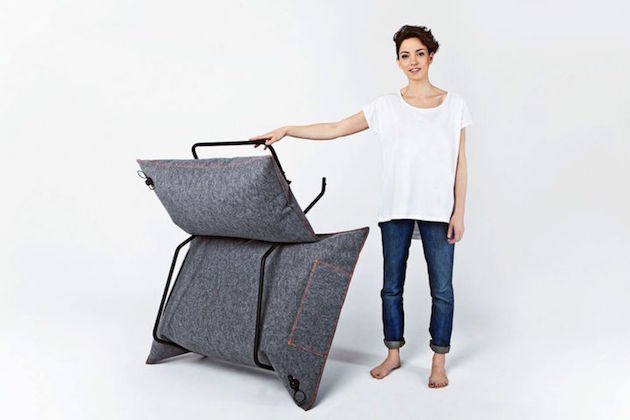With furniture like this moving apartments would be much more easier. The AIR collection, by polish design studio MALAFOR, consists of a sofa, armchair and three variations of stools. Each piece consists of a metal frame and inflatable pillow, they are light and easy to dismantle.
Inflatable pillow comes in a pillow cover and both are made of modern textiles. Inflatable bags are very durable and can withstand the pressure of 2 tons. If pierced, they can be quickly and cheaply replaced. The pillow cover is made of an extremely durable, non-flammable and easy-to-maintain textile.
[ Notcot, Feel desain, Malafor, Design and paper ]













